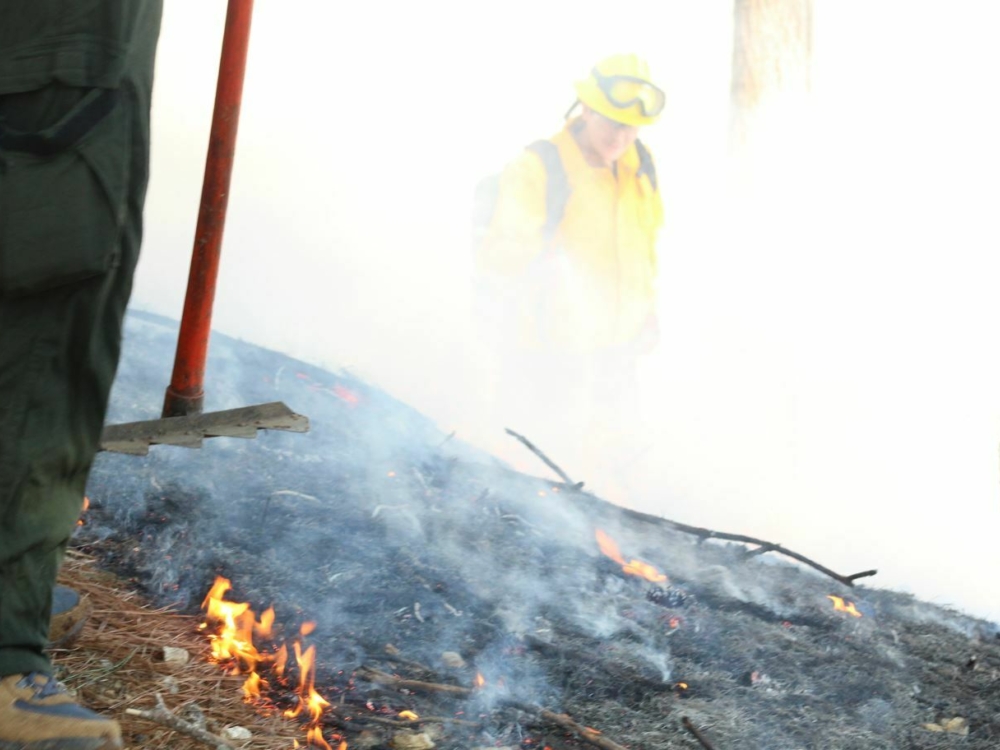









Mar 01, 2022
Let’s take a moment to appreciate healthy fire. March is prescribed fire (also known as controlled fire) month.
Fun fact: did you know that forests are fire dependent? But what exactly does it mean to use controlled fire?
Greenville Water participates in controlled (also known as prescribed) burning as a measure to protect our forests, water sources and nearby communities.
What is Controlled Burning?
Like rain, fire is a naturally occurring element that provides many benefits as well as detriments. Fire clears up buildup of thick brush and undergrowth, creates a natural balance in landscapes which improves the health of natural habitats, and can improve the conditions of communities and watersheds by clearing away dead forestry and other debris.
Controlled burning is the practice of applying fire to forest, brush or vegetation with careful planning and consideration, confined within a predetermined area. Controlled fire mimics natural fires, is beneficial for forest ecology and restoration, and is used to maintain various vegetation communities. What may come as a surprise to some in our community and beyond, is that our forests are fire dependent.
How is a Controlled Fire Different from a Wildfire?
Wildfire is a flame that is difficult to control, especially under hot, dry and windy conditions, and can occur anytime, costing a great deal of money and potentially risking lives.
Starting a wildfire typically requires a fuel source, such as dead leaves, logs, and other debris. Although the presence of fire is potentially dangerous due to these natural fuels, by reducing this burnable vegetation professionals lower the risk and severity of wildfires and protect habitats for wildlife.
Detailed planning and careful consideration is given to many factors, including the weather and wind, to ensure that the fire practitioners and nearby communities are safe and protected before any controlled burns take place.
How does Burning Reduce the Risk of Wildfire?
Periodic burning eliminates most of the flammable fuels that accumulate on the forest floor, such as leaves, pine needles, limbs or downed logs, rendering an area temporarily fire resistant. As fuels then re-accumulate over time, the overall amount of fuel is much less, making the occurrence of unplanned wildfire much less intense and damaging, and easier to control.
Controlled burning also interrupts the continuity of the fuel layer. As underbrush grows taller over time, a vertical fuel structure is developed, which can lead to surface wildfires climbing the fuel ladder and becoming disastrous crown fires.
Why is Greenville Water Involved?
Controlled burning is beneficial for the forestry, from the vegetation to the wildlife, and water is no exception! In order to protect our water quality, the environment around our water sources needs to be kept clear by disposing of the potential fire fuel such as dry leaves and logs. If a wildfire breaks out near a valuable water resource, the debris could affect the quality of your drinking water.
Our watershed maintenance and protection team members have been trained by The Nature Conservancy to effectively and safely create controlled fires around the watersheds to clear the debris and maintain water clarity and quality.
PFAS not detected in Greenville’s source and finished water
Read ArticleGreenville Water collaborates with SCFC and TNC to conduct Prescribed Fire on Hogback Mountain
Read ArticleGreenville Water Wins Prestigious AWWA 2024 Exemplary Source Water Protection Award
Read ArticleState of South Carolina to observe “Water Professionals Day” Annually
Read Article